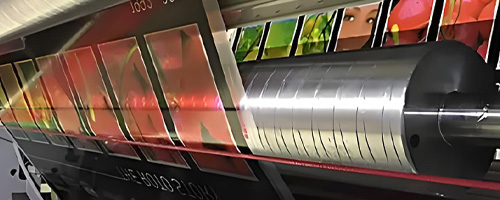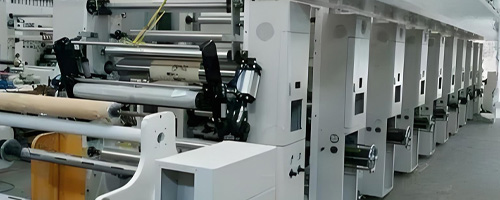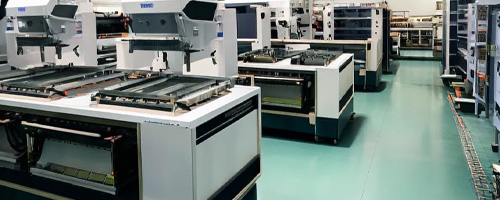 RU
RU
 EN
EN
 CN
CN

Position:HOME > Ink Knowledge

The pattern on the printing plate is prominent, the blank place is concave, through the anilox rollers to transfer ink, generally printed with water-based and UV inks, can reach 400 meters per minute. Flexographic printing is also a kind of letterpress printing.

The printing pattern on the surface of the printing plate is concave, the blank space is protruding, the printing ink layer is very thick, the color is bright, the line is clear, and the saturation is high. Solvent-based ink and water-based ink are available!

The graphic part and the blank part is in the same plane, to the surface of the printing plate inking, only the graphic part of the adsorption of ink, plate work is simple, low cost, suitable for large quantities of printing, mainly using solvent-based inks.

The printing plate consists of a number of small sieve holes, non-graphic part of the mesh is coated with a photopolymer coating sealed, printing adaptability, thick ink layer, three-dimensional sense of strong, bright colors, mainly solvent-based ink.
Experience superior shrink sleeve printing with StarColor’s UV inks for POF, PVC, PET, and PE films. Achieve brilliant color, strong adhesion, and distortion-free results. Free samples available!
Jun 19 2025
Discover how StarColor’s thermochromic inks provide advanced anti-counterfeit protection with temperature-sensitive color change. Ideal for pharmaceuticals, luxury goods, and more.
Jun 18 2025
Learn the key differences between water-based and oil-based varnish. Compare drying time, durability, eco-friendliness, and ideal applications to choose the best coating for your needs.
Jun 17 2025
Discover the advantages of water-based tactile varnish in packaging. Enhance consumer experience, improve sustainability, and boost brand value with eco-friendly soft-touch coatings.
Jun 16 2025
Discover how StarColor’s High Opacity UV Flexo Ink enhances print clarity on dark substrates with vibrant colors, fast curing, and eco-friendly performance.
Jun 12 2025
StarColor flexographic water-based ink has brought considerable economic benefits to enterprises and also solved their environmental compliance issues
Jun 10 2025
Discover the top 5 benefits of using high-speed printing ink in flexographic printing. Learn how faster drying, higher speed compatibility, and better print quality improve efficiency.
Jun 09 2025
Discover how high-speed water-based flexo inks improve efficiency, reduce downtime, and boost print quality. Learn why StarColor® inks are ideal for fast, sustainable printing.
Jun 06 2025
Discover how heat-resistant inks work and where they’re used. Learn about Starcolor’s high-temperature water-based inks for shrink sleeves, laminates, and sterilization packaging.
Jun 05 2025
Can water-based ink conduct electricity? Discover the science, applications, and Starcolor’s solutions for eco-friendly conductive inks.
Jun 04 2025